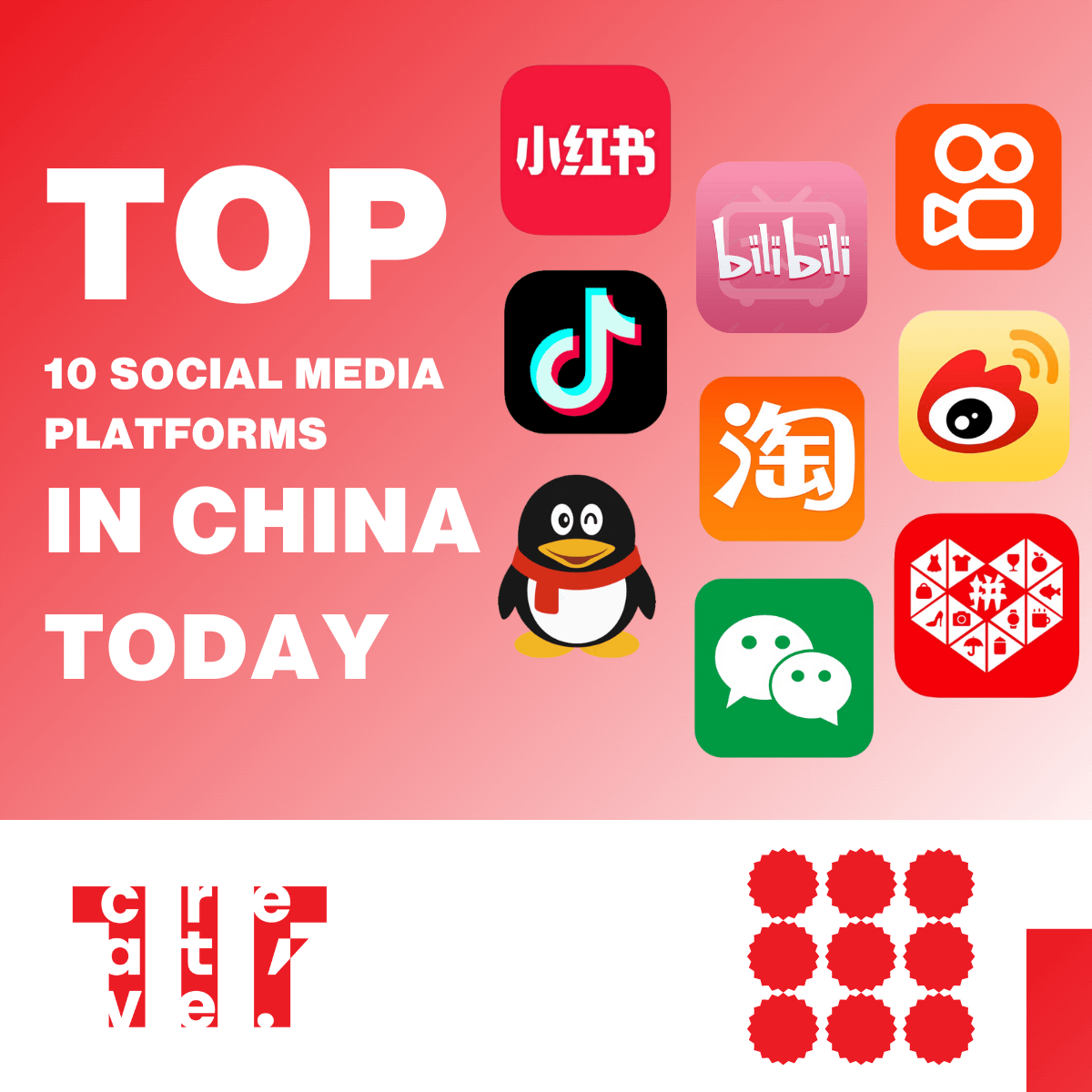The impact of social media in China is profound, serving not only as a source of entertainment but also shaping people’s preferences in food, lifestyle, and fashion. It provides a platform for users to explore diverse opinions on makeup, lifestyles, and popular vacation destinations. Consequently, social media platforms have become a significant time investment for many Chinese individuals.
A Typical Day Through the Lens of a Chinese Citizen’s Phone
Upon waking, many individuals instinctively grab their phones to browse updates and messages on WeChat and Weibo.
In the mornings, they typically stream music via QQ Music or Netease, conduct their morning purchases through WeChat or Alipay, hail a taxi with the Didi app, and order coffee through the Starbucks mini-program.
At the office, colleagues communicate over QQ and WeChat, and lunch is often ordered through Ele.me.
During meals, watching TV or viewing clips on iQiyi and Youku, which are akin to China’s YouTube, is a common practice, as is managing finances through Alipay or WeChat Pay.
Evenings often involve browsing WeChat Moments, shopping online on Taobao or JD.com, and reserving cinema tickets via Maoyan. For many, checking their phones is the first activity upon waking up.
The infographic below details the most popular social media platforms, the times they are most engaged with, and the purposes for their use.
The Top 10 Essential Chinese Social Media Applications for 2024
With over 1.4 billion inhabitants, China is among the world’s most “connected” countries. Currently, 79% of its population is active on social media platforms—an increase from 71% the previous year—with an average internet usage of 5 to 6 hours daily. Additionally, 89% of the population watches videos, 71% stream content, 53% engage in online gaming, and 74% use their mobile phones for shopping.
Given this context, it’s unsurprising that the Chinese app ecosystem is highly fragmented, with each platform and application occupying a distinct niche within the digital realm.
E-commerce is a significant contributor to the nation’s economy and constitutes a substantial portion of the digital ecosystem. Present trends indicate that video has become the second-largest segment, as evidenced by the frequency of use of video apps and platforms.
The Top 3 Social Media Apps in China
1. Douyin 抖音 – TikTok in China

Internationally recognized as TikTok, Douyin reigns supreme in the realm of short videos. Boasting 755 million users predominantly from third-, fourth-, and fifth-tier cities, they dedicate over two hours daily to the platform. Beyond short video content, livestreaming captivates 90% of its user base.
Douyin has risen to become one of the leading e-commerce platforms on social media today, drawing in millions of influencers and shoppers. The shopping experience is reminiscent of the infomercials that gained popularity in the 90s. By adopting a modern approach with a touch of glamour, this innovative business model is enhancing sales for numerous small brands aiming to connect with China’s middle class.
Advertising on Douyin is an effective strategy for brand popularity in China. Douyin, known for its competitive pricing, is keen on attracting more international brands to its platform within China.
Douyin 抖音 Statistics 2024
Monthly Active Users: 755M
Amount of time spent per day: approx. 125 minutes
*48% Female
*52% Male
Age Distribution:
*27% Age below 24
*42% Age 25-34
*19% Age 35-44
*12% Age 45 above
2. Xiaohongshu 小红书 | LITTLE RED BOOK or RED- Instagram in China

Xiaohongshu, also known as Little Red Book or RED, is a social media and e-commerce platform from China, akin to Instagram. Launched in 2013, it primarily appeals to the youth, especially urban women, with 80% of its users being under the age of 30. RED is distinguished by its user-generated content, influential Key Opinion Leaders (KOLs), and seamless e-commerce integration, enabling users to explore and buy international products. Boasting a community of 300 million monthly active users and partnering with over 140,000 brands, Xiaohongshu provides a distinctive gateway for international brands aiming to penetrate the Chinese market.
Its user base is predominantly female (89% women, 62% Gen Z), active, and influential, with a focus on fashion, cosmetics, and lifestyle products. These digital natives, possessing high incomes and substantial consumption power, significantly boost branding. RED distinguishes itself with its distinctive features and e-commerce integration, offering a compelling platform for influencer marketing and product promotion. Moreover, 56% of its users report using the platform multiple times daily.
Xiaohongshu Statistics 2024
Monthly Active Users: 300M
Amount of time spent per day: 56% of active users use it many times a day
*89% Female
*11% Male
Age Distribution:
*10% Age below 18
*46% Age 18-24
*27% Age 25-34
*17% Age 34 above
3. Weibo 微博 – Twitter in China

Weibo’s extensive range of features has transformed it into a multifaceted platform unparalleled by Western social media.
Imagine any feature present on social media platforms, and Weibo likely incorporates it. Its user base, in the hundreds of millions, is predominantly young, with those born after 1990 making up 48% and post-2000s accounting for 30%. The gender split is nearly even, and on average, users dedicate 50 minutes daily to the platform.
Weibo, which means MicroBlog, serves as a real-time platform for sharing brief messages. Often regarded as China’s answer to Twitter, Weibo is a sophisticated platform that provides various native advertising options, semi-targeted advertisements, and even live streaming capabilities.
The awesome features offered by Weibo
- Message posts
Initially, posts were restricted to 140 characters each, but Weibo has since expanded its character limit to encourage more detailed messages. The concept is similar to posting thoughts or updates for your online followers, akin to platforms like Facebook or Twitter.
- Follow accounts
Weibo is a social networking platform that lets you follow individuals or organizations that capture your interest, allowing you to stay updated with their latest content and shared information, much like any other social media platform. Similarly, others can follow you to see your updates.
- Live sessions
To increase attention online, users can discuss current topics and interact with other people.
- Hashtags and mentions
Similar to Instagram, the “@” symbol is utilized to tag individuals. Hashtags are frequently employed to locate topics, a feature Weibo pioneered years before Instagram introduced the “follow the hashtag” function.
- Public and private interactions
You have the option to comment on and share others’ posts. For increased privacy, private messaging is available for conversations.
- Weibo square
Weibo offers numerous gamification features, such as earning medals and adding applications, which can be explored in Weibo Square.
- Vlogs
- Livestreaming
Weibo Statistics 2024
Monthly Active Users: 583M
Amount of time spent per day: approx. 50 minutes
*49% Female
*51% Male
Age Distribution:
*80% Age below 30
*20% Age above 30
The Top 4 Messaging Platforms in China
4. WeChat 微信 – All-in-One App

WeChat is a comprehensive app that combines messaging, social media, online banking, and utility payments, offering a wide array of features.
To say that WeChat greatly simplifies life in China is no overstatement. It’s indispensable for residents. Notably, 98.5% of smartphone users between the ages of 50 and 80 are on WeChat, with those over 60 dedicating more than half of their total mobile data to the app.
In contrast, the younger demographic spends about 14% of their mobile data on WeChat. Additionally, the majority of users accessing information through official WeChat accounts are over 30.
Overall, WeChat’s user base is approximately 48% female and 52% male, with an average daily usage of 1 hour and 20 minutes.
The best features offered by WeChat
- WeChat enables users to send voice messages, videos, images, and texts via the Internet. It facilitates group chats, and is primarily used for communication among friends through text messages, images, GIFs, and video calls.
- WeChat is entirely free to use; the only requirement is an internet connection.
- The platform features mini-programs that are smoothly integrated into its interface, each crafted by various brands and companies aiming to sell, engage, and entertain.
- WeChat’s integrated applications cover an extensive array of services, such as brand stores, utility payments, mobile top-up options, online ordering, and many others.
1. For business purposes
- WeChat is popular for business promotion as it enables the creation and promotion of business accounts.
- These accounts typically fulfill specific roles, such as delivering offers, listings, blogs, and so on, or they may convey general business information.
- Furthermore, WeChat mini-apps streamline the utilization of partner services, such as booking taxis, scheduling hospital appointments, and making bill payments.
2. The WeChat Pay App
- WeChat’s popularity in China can be largely attributed to its user-friendly payment system. Users can effortlessly pay for items by scanning a WeChat QR code, using their WeChatPay wallet that is directly connected to their registered bank cards on the platform. This feature greatly benefits businesses as it simplifies the purchasing process for users across various platforms within China.
3. Adding friends on WeChat and Privacy functions
- The most popular ways to add friends on WeChat are by searching with their phone number, scanning a WeChat QR code, adding from your QQ friends list or mobile contacts, and using their WeChat ID when it’s available.
- Another convenient feature is the ability to find nearby people by shaking your phone.
- The most commonly utilized messaging features include instant voice messages, video chats, and calls via WeChat.
4. Instagram-inspired timeline and walls
- Drawing inspiration from Instagram, WeChat now gives its users the ability to create a ‘wall’—a personal space for sharing life’s Moments through photos, videos, messages, and music.
- However, only friends with the permissions you set can view your wall. Therefore, it’s up to you to configure your WeChat settings to your comfort level.
WeChat Statistics 2024
Monthly Active Users: 1.36B
Amount of time spent per day: approx. 80 minutes
*48% Female
*52% Male
Age Distribution:
*22% Age below 24
*14% Age 25-30
*22% Age 31-40
*20% Age 41-50
*22% Age 51 above
5. Téngxùn QQ | 腾讯QQ – The Fb Messenger in China

Despite WeChat’s popularity, its predecessor, QQ Messenger, still claims over 571 million monthly active users. It is frequently used on desktops for its email and file management integration and retains a nostalgic charm for those who were among the first to adopt online messaging before WeChat. Tencent, the company behind WeChat, QQ Zone, QQ Messenger, and numerous subsidiary brands, leads in China’s tech innovation.
Currently, Tengxun.com is a popular search engine linked with WeChat, and QQ Mail is a leading email service for individuals and businesses alike. QQ Music and V.QQ are entertainment platforms, while QQ Zone is a significant Tencent Group platform, enabling worldwide communication within its network.
QQ Messenger serves as an instant messaging and social media platform, providing messaging, voice and video calls, microblogging, and various social features. Interestingly, while the app is globally available, 96% of its users are in China, with a demographic distribution of roughly 52% male and 48% female users.
Téngxùn QQ Statistics 2024
Monthly Active Users: 571M
*48% Female
*52% Male
Age Distribution:
*28% Age below 24
*17% Age 25-30
*26% Age 31-40
*17% Age 41-50
*12% Age 51 above
Top 2 Social Media with E-commerce Platforms
6. Taobao 淘宝 – AliExpress in China

Since its launch in 2003 by Alibaba Group, Taobao has become a well-known name in China’s e-commerce sector. With an annual turnover that surpasses several hundred billion dollars, it stands on par with global giants such as eBay and Amazon.
The platform appeals to a broad spectrum of consumers, particularly the youth, due to its extensive product range and user-friendly interface. Taobao distinguishes itself with features like live streaming, customizable storefronts, and interactive options, drawing in a vast audience, including a significant number of younger shoppers. It holds a pivotal position in China’s digital retail market, providing a comprehensive and diverse online shopping experience.
Taobao Statistics 2024
Monthly Active Users: 612M
*70% Female
*30% Male
Age Distribution:
*17% Age 18-24
*39% Age 25-34
*20% Age 35-44
*24% Age 35 above
7. Pinduoduo 拼多多– Taobao but even cheaper

The e-commerce giant Pinduoduo surpassed JD.com in active users, with the platform enjoying popularity across all generations. Remarkably, 60% of its users come from third and fourth-tier cities.
Shanghai XunMeng Technology created Pinduoduo in September 2015, and it went public in the United States in 2016. Last year, it became the second most downloaded application in China. Pinduoduo operates as a third-party social e-commerce platform, focusing on the C2B conglomerate model.
In 2023, Pinduoduo continued to impress the market with a sales growth of 66.6% over three years and a 142.6% increase in earnings per share, drawing strong institutional interest. These outstanding achievements not only solidified its market presence but also contributed to a substantial increase in its stock price. Pinduoduo’s success can be attributed to its innovative approach and adaptability to consumer trends, securing a formidable place in China’s competitive e-commerce landscape.
Pinduoduo Statistics 2024
Monthly Active Users: 637M
*69% Female
*31% Male
Age Distribution:
*15% Age 18-24
*38% Age 25-34
*21% Age 35-44
*26% Age 35 above
Top 3 Chinese Video Platforms
8. Kuaishou 快手 – Genuine and Unaltered

Living up to its name, which means “Fast Hands,” Kuaishou has quickly become one of the leading social media applications in China. It stands out for its emphasis on short-form videos, promoting authentic, unedited content like live streams and vlogs.
As a preferred live-streaming platform, it claims 380 million monthly active users, with roughly 70% being under the age of 35. Kuaishou differentiates itself from Douyin by encouraging extended interactions between users and content creators. The app attracts 347 million daily users who dedicate over two hours to content consumption. Notably, men slightly outnumber women, representing 55% of the user base compared to 45%.
Kuaishou Statistics 2023
Monthly Active Users: 380M
Amount of time spent per day: approx. 127 minutes
*45% Female
*55% Male
Age Distribution:
*28% Age below 24
*17% Age 25-30
*26% Age 31-35
*17% Age 36-40
*12% Age 41 above
9. Bilibili 哔哩哔哩 – China’s YouTube

Bilibili (Chinese: 哔哩哔哩), initially a hub for anime enthusiasts, has evolved into a cultural community and platform, now often referred to as ‘China’s YouTube’. As a primary video-hosting site, it also offers livestreams, which are especially popular with gamers, and is expanding into TV production.
The app and its features are particularly appealing to users aged 19 to 24, who make up 61% of its user base. Both men and women are equally active on the platform, averaging 1 hour and 30 minutes of usage time.
Bilibili Statistics 2024
Monthly Active Users: 341.5M
Amount of time spent per day: approx. 90 minutes
*52% Female
*48% Male
Age Distribution:
*19% Age below 18
*61% Age 19-24
*8% Age 25-35
*12% Age 36 above
10. Youku 优酷 – With similarities to the features of Netflix and YouTube

Youku, often referred to as the “Chinese YouTube,” holds a distinctive position among China’s key social networks. Over two-thirds of its 580 million registered users are from affluent and university-educated backgrounds.
The audience predominantly consists of females (67%) and males (33%), with the majority of users falling within the 25-34 age range (28%), followed by the 35-44 age bracket (31%). Users under 24 account for 17% of the viewership, whereas the older demographics are less prevalent.
The features of Youku
- Youku is a video platform managed by the Youku group under the Alibaba conglomerate. It stands as one of the top video platforms with a daily viewership exceeding 1.18 billion minutes.
- The platform boasts a large content library that includes movies, series, and exclusive offerings. It supports live streaming and utilizes AI to provide personalized recommendations, aiming to improve user experience. Additionally, users have the option to download content for offline viewing. While videos are accessible on computers and TVs, they are predominantly viewed on mobile phones.
- Youku’s business model encompasses advertising, premium subscriptions, pay-per-view options, and integrated e-commerce functionalities. Free access is provided but includes advertisements and restricts the availability of exclusive content and HD quality.
Youku Statistics 2023
Monthly Active Users: 461M
*67% Female
*33% Male
Age Distribution:
*17% Age 18-24
*28% Age 25-34
*31% Age 35-44
*24% Age 35 above
On which platforms do Chinese people spend their time?
WeChat remains a powerhouse in China’s social networking landscape, boasting a massive user base exceeding one billion and becoming integral to daily life’s fundamental aspects. For businesses, its use is indispensable. By the close of 2023, WeChat was utilized by 87.3% of China’s populace.
Douyin, known as the Chinese version of TikTok, engages 78.4% of China’s population. It encompasses all features of TikTok, along with many additional and more comprehensive functions, leading to an average daily consumption of over two hours of its short videos by Chinese users.
Note: China has restricted Douyin usage to 40 minutes per day for children under 14.
Tencent’s QQ instant messaging service and Baidu’s Tieba search engine are closely competing, with 59.8% and 58.8% of Chinese users utilizing their services, respectively.
Since its inception in 2021, Xiaohongshu, often dubbed as China’s Instagram, has amassed a user base that constitutes approximately 51.2% of the Chinese population within a mere two years! (The app was launched in June 2021, with statistics as of September 2023).
While Sina Weibo remains significant; despite a reduced audience, the platform still boasts 46.8% of the Chinese population as active users.
Which Social Media Apps in China should you use for your business in 2024?
The selection of Chinese applications in which you choose to invest will hinge on your business type.
Generally, most Chinese individuals seek advice on platforms like RED and Weibo, consume entertaining and educational content on WeChat, and view videos on Youku and Douyin. The younger demographic often browses Taobao for novel and intriguing products, whereas the older demographic hunts for deals on Pinduoduo.
Most platforms provide purchasing options, and nearly all are interactive and comprehensive, ensuring users have access to full functionality. The vastness of the Chinese social media landscape makes it quite easy to become overwhelmed.
In China, every second sees the publication of at least 500 articles on WeChat, the booking of 200 hotel rooms on Qunar, the posing of 115,000 questions on Zhihu, and the placement of 3,500 orders on Ele’me.
These figures are widely considered to be quite remarkable. Moreover, over 65% of users open their WeChat app more than 10 times daily, and approximately 45 billion messages are sent each day.
Regardless of whether your brand has a large following on Weibo or Douyin, linking your e-commerce to social media platforms remains crucial. Therefore, identifying the top Chinese social media platforms to bolster your e-commerce solution is essential.
Feel free to reach out to TIF Asia with any inquiries or for further information. We are committed to helping you establish a robust presence and successfully manage and enhance your presence on Chinese social media platforms.
#tifasia #Chinesesocialmedia #socialmediamanagement




